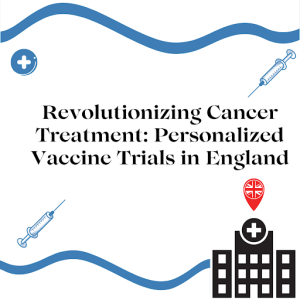By Mackenzie Smith, C2ST Intern, Loyola University
What comes to mind when you think of schizophrenia? Movies and TV shows paint a picture of uncontrollable and disturbing visions, or even threatening thoughts and actions. The reality is that these are misconceptions – the vast majority of people who are diagnosed with schizophrenia are not violent and deal with challenges in socialization and cognition. Currently, there are nearly 3 million people in the United States living with schizophrenia and struggling to find medications that allow them to live stable lives. However, new hope is just around the corner. In September, a new antipsychotic treatment was approved by the FDA for the first time in decades. Why the rollout of a new therapeutic took so long gives us a peek into the difficulties of developing ways to treat any illness, and why mental illness is often left behind.
Continue reading “The Decades-Long Search for a Better Way to Treat Schizophrenia”
By Rowan Dunbar, C2ST Intern, University of Illinois Chicago
With the coming of fall, my head is often filled with images of beloved seasonal activities like carving pumpkins, buying apple cider, and celebrating Halloween. These images also come with pictures of ghosts around corners, witches on broomsticks, and scientists creating monsters. I love spooky festivities as much as the next person, but as a biomedical engineering student*, I also wonder why science is often portrayed as scary. Where did the mad scientist narrative originate? How does this factor into the amount of people, especially folks of color, I hear say that they are hesitant to receive new medical treatments? As it turns out, these questions lead back to the story of one particular Halloween monster – Frankenstein’s monster.
By Erin Scheg, C2ST Intern, Loyola University
Like billions of people across the globe, I watched countless hours of the Paris 2024 Summer Olympic Games. While tuning in to the much anticipated event, I was amazed to learn about the advancing technology implemented into every aspect of the Games. Technology has played a large role in improving the experiences of the viewer and athlete alike. From improving the safety, health, and performance of the athletes to offering perspectives that remote viewers could never have imagined, technology has radically changed the Olympic experience.
Continue reading “How is Advanced Technology Improving the Olympics?”
By Ella Coley, C2ST Intern, Waubonsee Community College
The United States throws away nearly 60 million tons of food each year. We produce more food waste than any other country in the world, equaling 325 pounds of garbage per person. It’s like everyone in America throws 6 and a half large packed suitcases directly into a landfill. According to the United States Environmental Protection Agency, when food and other organic materials break down and decompose in an environment that lacks a flow of oxygen, the bacteria that break down the food begin to emit greenhouse gases such as methane, carbon dioxide, and chlorofluorocarbons, all of which contribute to global warming. Wasted food in landfills across the United States emits greenhouse gases equivalent to the emissions from 37 million cars, according to the World Wildlife Federation. One solution that can help reduce the amount of food waste sent to landfills and reduce greenhouse gas emissions is composting.
By Erin Scheg, C2ST Intern, Loyola University
Cancer is one of the leading causes of death worldwide, with an increasing rate of cases each year. Multiple treatments, including chemotherapy, surgery, radiation therapy, and immunotherapy are utilized to help patients fight the disease. In addition to these efforts, doctors and scientists continue to seek improvements in cancer detection, prevention, diagnosis, and survivorship. Recently, a groundbreaking vaccine treatment has moved on from small human trials and has begun testing on a larger size and scale. In England, thousands of patients started trials for the National Health Service Cancer Vaccine Launch Pad. The new cancer vaccine is a type of immunotherapy that aims to cause an immune response where the patient’s own immune system targets cancer cells and prevents the cancer from returning. Immunotherapy is a treatment that uses a person’s immune system to fight cancer cells.
By Vinchenzo Vassalotti, C2ST Intern, Loyola University
As a Sexual and Gender Diversity (SGD) researcher in-training, the foundations of my work acknowledge structural and social inequity – concepts intertwined with public policy. For those who hold diverse gender identities, their access to legal protections and ”gender-affirming care” are at increasing risk due to recent shifts in public policies surrounding this topic. However, the reality is, access to gender-affirming care is not just for sexual and gender-diverse people. Gender-affirming care is healthcare that addresses the needs of a wide array of people, including gender nonconforming and cisgender folks. Limiting access to certain healthcare can have significant, harmful effects for all those who rely upon its assistance.
The following blog is intended to provide an introduction to a component of healthcare commonly known as “gender-affirming care” (GAC), address some harmful myths, and acknowledge the uptick in restrictive legislation.
Continue reading “(Gender-Affirming) HEALTHCARE”





